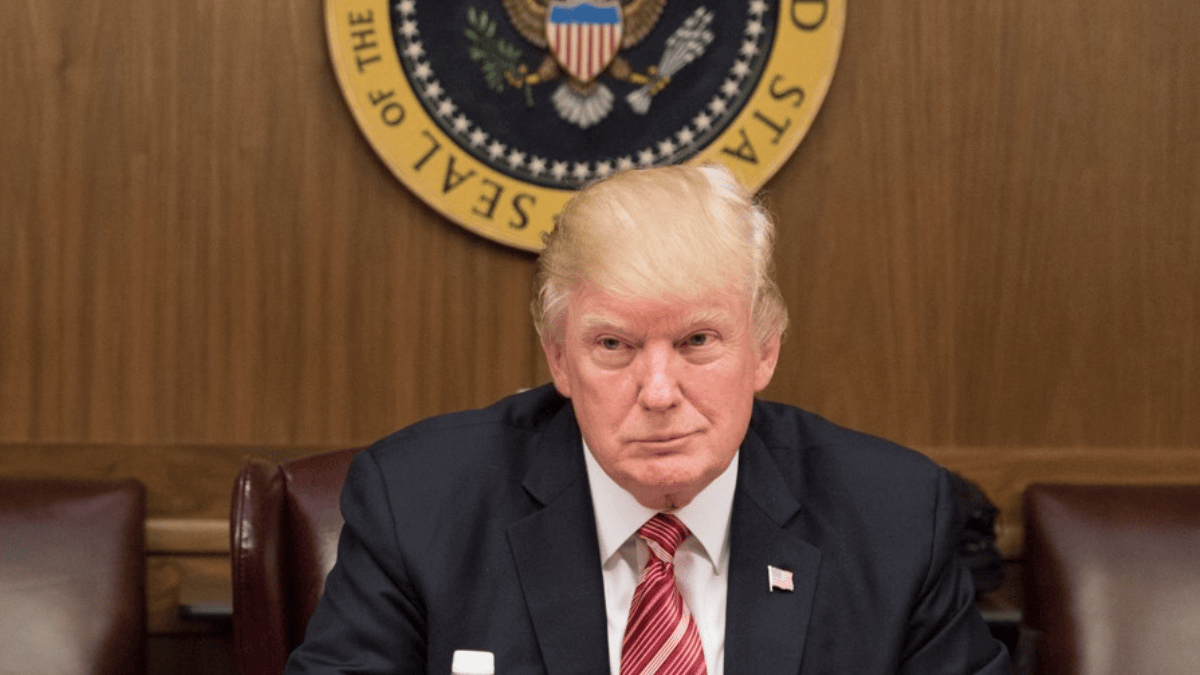Trump Threatens Tariffs: Act Fast or Face New U.S. Rates Alone

President Trump stated that his government will dispatch correspondence to apprise other countries of the tariff rates The United States intends to introduce new tariffs on imported goods. He stressed that the U.S. will establish these rates independently for the majority of nations. Letters informing about this development will be dispatched over the coming two to three weeks, setting a tight timeframe for 150 countries to come to an accord or else confront the consequences. higher tariffs This method underscores the administration's haste in altering trade relationships.
Trump highlighted the complexity involved in holding individual talks with many nations, saying, "We can’t possibly meet everyone who wants to talk to us." Given that 150 countries are keen on striking deals, the administration encounters difficulties handling these vast-scale discussions. This scenario implies that the president plans to set conditions, using America’s financial clout to swiftly finalize trade accords.
The communications outlining the updated tariff prices will be dispatched by Treasury Secretary Scott Bessent along with Commerce Secretary Howard Lutnick Trump stated that the fees would be "quite reasonable," basically apprising nations about the expenses associated with operating within the U.S. Nonetheless, it’s still ambiguous whether these duties represent new charges or modifications to current impositions, which leaves ample space for conjecture and ambiguity.
This declaration comes on the heels of the government’s implementation of record-high tariffs on April 2, which was labeled as “Liberation Day.” Subsequently, some of these measures were relaxed following significant criticism. 90-day halt on "mutual" tariffs To facilitate negotiations, the U.S. currently imposes a uniform 10% tariff on most imported goods, though some items face even higher duties. Even with this suspension, the mean effective U.S. tariff rate remains at approximately 13%, which represents a substantial rise from the previous figure of 2.3% prior to Trump’s second term.
Goldman Sachs analysts forecast that the effective U.S. tariff The rate might increase by roughly 13 percentage points this year, hitting levels last observed at that time period. 1930s Trump proposed that importers could encounter tariffs higher than 10%, with potential tariffs as high as 50% within a year . In contrast to the U.K. agreement, where the rate was established as 10% Other nations might encounter increased tariffs, escalating trade disputes.
U.S. companies , such as Walmart and Target , cover the expenses related to import tariffs instead of having them borne by manufacturing countries. Often, these companies transfer such costs to U.S. consumers via increased pricing. Walmart has already issued warnings about upcoming price hikes because of this issue. tariff impacts . Despite being at lower intensities, such as the 30% rate For China, increased tariffs will result in higher costs for consumers, impacting family finances and their ability to spend.
The leadership is currently engaged in talks with major trade partners Including frameworks announced by countries like the U.K., China, which decrease tariffs or dismantle trade obstacles, talks are ongoing with nations such as India, South Korea, and Japan. Nonetheless, these trade pacts can be intricate and typically require several years for completion, thus reducing the impact of tariff pressures in swiftly obtaining commitments from various trading allies.
Trump's tariff objectives
Trump has stated that the tariffs aim to incentivize companies to relocate manufacturing plants to the U.S., reviving domestic manufacturing jobs. He has cited significant investments announced in the U.S., estimating a total between $12 and $13 trillion. Nevertheless, numerous trade specialists continue to doubt this notion, asserting that businesses choose sites for their factories based on multiple considerations such as labor expenses, energy fees, transportation costs, tax percentages, and regulatory conditions.
The final level and composition of the tariffs stay unclear. Trump's changing position on tariffs has led to " stunning unpredictability for companies and customers, adding complexity to planning and decision-making processes. As circumstances change, both businesses and consumers have to tackle the difficulties presented by possible shifts in tariffs and their wider economic impacts.

Post a Comment for "Trump Threatens Tariffs: Act Fast or Face New U.S. Rates Alone"